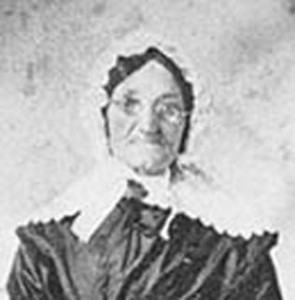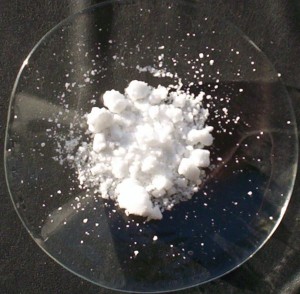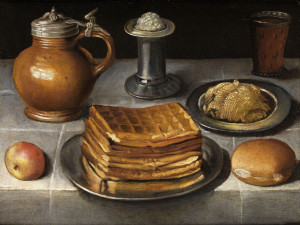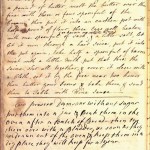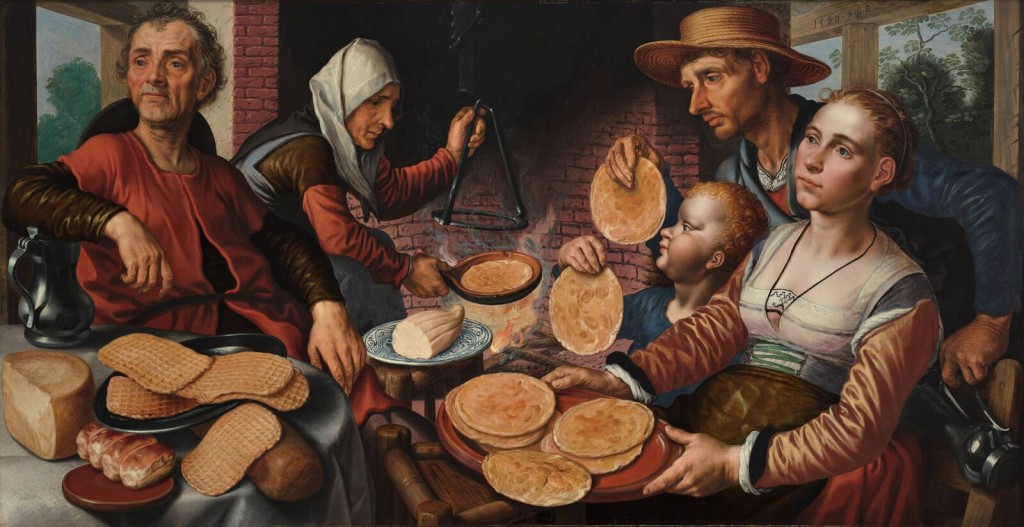As a child, Eliza Leslie had no plan to become a cookbook author, much less the finest and most influential American cookbook author of the second third of the nineteenth century. She was born in 1787, the eldest of five children of Robert Leslie, an eighteenth-century Philadelphia philosophe, who made watches by day and spent his evenings discussing science, mathematics, and the ongoing invention of the American republic with Benjamin Franklin, Thomas Jefferson, and other friends from the American Philosophical Society. From 1792 to 1797 Mr. Leslie brought his family to London, where he attempted to expand his watchmaking into an export business, and where the young Eliza, haphazardly educated at home, began to mature into a constant reader and mildly acerbic intellect whose ardent hope was one day to see her name in print. Alas, Mr. Leslie’s business plans failed, as did his health, and after his death, in 1803, his wife was compelled to open a genteel boardinghouse to keep the family afloat. As helpmate to her mother in this enterprise, Eliza Leslie found herself having to supervise a staff, including a cook, about whose doings she knew little. Fortunately, a famed Philadelphia confectioner by the name of Mrs. Goodfellow had opened a cooking school in her shop—the first school of its kind in America. Here, Leslie recorded, in copious detail, recipes which made the Leslie boardinghouse famous—and recipes which, even many years later, when Leslie had become a successful writer, mostly of children’s stories and short fiction, her friends constantly importuned her to share. Finally, her brother Charles Robert Leslie![title+page+of+Miss+Leslie[1]](http://manuscriptcookbookssurvey.com/wp-content/uploads/2015/05/title-page-of-Miss-Leslie1-201x300.jpg) (who had stayed behind in England and become a well-known painter of historical scenes) convinced Leslie to publish these recipes as cookbook, which she did, in 1828, titling it Seventy-Five Receipts for Pastry, Cakes, and Sweetmeats, by A Lady of Philadelphia. At the time there were only a handful of American cookbooks in print—most American women still cooked out of British cookbooks—and it was perhaps Leslie’s promise, in her preface, that her recipes were “in every sense of the word, American” that impelled her “little book” to enormous popularity, appearing in innumerable editions practically to the end of the nineteenth century.
(who had stayed behind in England and become a well-known painter of historical scenes) convinced Leslie to publish these recipes as cookbook, which she did, in 1828, titling it Seventy-Five Receipts for Pastry, Cakes, and Sweetmeats, by A Lady of Philadelphia. At the time there were only a handful of American cookbooks in print—most American women still cooked out of British cookbooks—and it was perhaps Leslie’s promise, in her preface, that her recipes were “in every sense of the word, American” that impelled her “little book” to enormous popularity, appearing in innumerable editions practically to the end of the nineteenth century.
Although Leslie continued to publish fiction and journalistic pieces into the 1840s, garnering several prizes along the way, the success of Seventy-Five Receipts inevitably lured her into rechanneling her career toward books of domestic management, for she was unmarried and self-supporting. In 1837, Leslie brought forth a general-purpose cookbook titled Directions for Cookery in its Various Branches, which sold at least 50,000 copies in various printings and editions (an astonishing achievement in the day), and, in 1846, a somewhat tonier cookbook, The Lady’s Receipt-Book, which met with somewhat lesser but nonetheless impressive success. Still more cookbooks, as well as a “behavior” (or etiquette) book, appeared in the 1850s. By this time Miss Leslie (as she had come to be known) was ensconced as a full-time resident of Philadelphia’s United States Hotel, where she comported herself as the grand figure she was, visiting with the hotel’s many celebrated guests and signing the autograph books of the many admirers who sought her out.
It has always intrigued me that Leslie’s remarkable career was built on the work of a confectioner and cooking teacher named Mrs. Goodfellow—and I have always wondered if it really was. Since the beginning of Anglo-American cookbook publishing, cookbook authors have been wont to buttress the authority of their recipes by attributing them to respected or famous persons, whether royalty, first ladies, the socially prominent, or well-known cooks. Mrs. Goodfellow might seem too obscure a figure to elevate as recipe godmother, but she was in fact renowned even beyond the environs of Philadelphia. Indeed, following Mrs. Goodfellow’s death, in 1851, at age 83, a woman who identified herself only as “A Good Housekeeper and a pupil of Mrs. Goodfellow,” published a cookbook titled Cookery as It should Be, which the publisher crowed was “sure to be well received” given its source, which was, at least ostensibly, the noted confectioner. In point of fact, very few of the receipts in this 362-page tome date from Mrs. Goodfellow’s heyday, and if Eliza Leslie actually did copy her Seventy-Five Receipts from Mrs. Goodfellow, as Leslie claimed, our Good Housekeeper must have been a very poor note taker, for no more than two or three of Cookery’s recipes overlap with Seventy-Five Receipts.
Thus it was with great anticipation that I approached a manuscript cookbook in the possession of the Clements Library of the University of Michigan, which appears in the library’s catalogue under the title “Mrs. Goodfellow Receipts, 1860-1870,” and which contains twenty-three recipes explicitly identified as belonging to the famed confectioner (along with 175 or so others, which are later). Presumably copied by a pupil of Mrs. Goodfellow, the manuscript would seem to corroborate Miss Leslie’s claims as to origins of Seventy-Five Receipts. Fully eleven of the manuscript’s Goodfellow recipes are manifestly versions of recipes appearing in Leslie’s little cookbook, and two are versions of recipes outlined in Leslie’s later Directions for Cookery. In addition, five of the manuscript’s Goodfellow recipes bear an obvious relationship to recipes in Seventy-Five Receipts; that is, although Leslie chose not to print these recipes, she imported distinctive elements of them into her own recipes for the same items. Only five of the manuscript’s Goodfellow recipes do not show up in any form in any of Leslie’s works. Or at least I do not think they do: Leslie published thousands of recipes over the course of her career, and while I think I have seen them all, I probably have not—and I certainly do not remember all that I have seen.
Obviously, I cannot say for certain that the recipes in the Goodfellow manuscript cookbook were copied verbatim from Mrs. Goodfellow. Nor can I say that Mrs. Goodfellow taught the same recipes for the same items throughout her teaching career. In fact, speaking as a cooking teacher myself, I would be surprised if she did. But if we assume, for the sake of argument, that the recipes in the manuscript are the originals from which Miss Leslie worked, we can discern just how canny Leslie’s appraisal of her readers’ needs and aspirations was. From the start of her career, Leslie positioned herself as a cookbook author who, on the one hand, was willing to make reasonable compromises for the sake of practicality but who, on the other hand, remained an unabashed exponent of what was then called “rich cooking.” In the second third of the nineteenth century, this was precisely the right appeal for the audience Leslie presumed, the supremely ambitious upper-middle classes, who, though beset by anxieties amid the day’s ruinous economic cycles and increasingly bitter North-South divide, were nonetheless determined to live well and express a genteel identity through fancy-dress evening parties featuring lavish displays of food. For this audience Leslie cleverly reconfigures the manuscript’s Goodfellow recipes to make them just a bit richer and more highly (and more imaginatively) flavored, without significantly increasing their cost and complication. Leslie’s pound cake has twelve drops of lemon essence and an entire nutmeg, where the manuscript version has only six drops and a few scrapings. Leslie’s Apees (a sort of crisp-crumbly cookie) are made with wine and rose water and feature three tablespoons of caraway seeds, while the manuscript’s Apees (abbreviated as A. P.’s) are made with water and have only “a few” seeds. Leslie enriches her Milk Biscuits with butter and eggs, while manuscript’s recipe for the same calls for only flour, milk, and yeast. Leslie’s Almond Pudding has twice as many almonds as the manuscript’s recipe for the same, and her Coconut Pudding has twice as many beaten egg whites. And so it goes. In no instance does Leslie make a recipe plainer, although she does sometimes make it more practical. For example, all of the manuscript recipes for puddings in puff pastry crusts yield four tiny puddings. Leslie reconfigures these recipes to yield one medium-size pudding, on the assumption, I think, that one medium-size pudding would be sufficient for most women’s purposes and, if not, it would be easy enough to double the recipe.
The recipes in the manuscript that Leslie chose to leave behind are interesting for another reason, and this brings us to the cookbook ostensibly sourced from Mrs. Goodfellow but actually not. By the end of her career, the tiny, parochial, overwhelmingly culturally English America of Leslie’s youth had been swallowed up by a far larger, rapidly industrializing and urbanizing, and increasingly diverse and factionalized America. Food and cooking had changed in tandem, the prevailing taste of the times, at least as exhibited in the many cookbooks now on the market, having shifted from an essentially British, upper-class, eighteenth-century cuisine, freighted with rich, expensive ingredients and many practical difficulties, to a much simpler, easier, more naturalized cuisine that truly was “in every sense of the word, American.” Many of these changes did not please Leslie at all, especially one: women’s ever-escalating reliance on chemical leavening, whose common forms today are baking soda and baking powder.
Alkaline chemical leavenings (that is, baking sodas) had been used (in secret, it seems) by gingerbread bakers in northern Europe since at least as early as the sixteenth century. Commercial Dutch (and possibly German) bakers brought chemical leavenings to America, and by the late eighteenth century Americans were beginning to use these substances, heretofore regarded as adulterants, in home kitchens—the first people on earth to do so. Through the first half of the nineteenth century, most women remained wary of these substances, but most, including Leslie, countenanced their use in the “plain cakes” served to family and informal company at evening tea. However, the “fine cakes” that graced the tea tables and supper tables of evening entertainments were an entirely other matter. All good cooks considered chemical leavening an abomination in fine cakes, just as many European cooks today still do. Alas, by the time Leslie published her last cookbook, in 1857, just a year before her death, this barrier was being breached. Leslie had heard that some women were introducing alkalis to Golden Cake, a very fine cake but also a very tricky one. Predictably, she was appalled and railed in her recipe for this cake: “If you use soda, saleratus, hartshorn, or any of the alkalis, they will entirely destroy the orange flavor [of this cake], and communicate a bad taste of their own.” And then, a few pages on, at the end of a recipe for Spanish Buns (one of Mrs. Goodfellow’s particular specialties), Leslie drifts off into a bittersweet reminiscence of her days in Mrs. Goodfellow’s kitchen. There, she writes, only “good things” were made, and “the use of soda and other alkalis [was] unknown… hartshorn in cakes would have horrified her.”
Leslie was likely thinking of Cookery as It should Be when she penned these remarks. Although supposedly featuring Mrs. Goodfellow’s receipts, the book is full of chemically puffed-up cakes, including golden cake. Although this book was originally published by the same house that published Leslie, Leslie’s indignation was such that she savaged it in a review, first and foremost for its chemical horrors.
This brings us to a puzzling issue. Four of the recipes in Seventy-Five Receipts call for pearl ash, the original American “baking soda,” and in the second edition of the book, published in 1832, Leslie replaces the book’s original soda-free gingerbread nuts (gingersnaps) with a pearl ash version. Did these recipes come from Mrs. Goodfellow, with her horror of alkalis? To judge from the Clements Goodfellow manuscript, they did not. None of Leslie’s chemically leavened recipes appear in this manuscript, and even more significantly, two of the cakes that Leslie raises with pearl ash in Seventy-Five Receipts, molasses gingerbread and the gingerbread nuts, show up in traditional, soda-free guise in the Clements manuscript. It bears mentioning that one of the Goodfellow recipes in the Clements manuscript, for the sweet buns called rusks (more often eaten fresh than dried, despite today’s understanding of rusks as toasts), does call for “a little pearl ash”—while Leslie’s rusks recipe in Seventy-Five Receipts does not. This, however, can be explained. The purpose of the pearl ash here is not so much to leaven the dough—the recipe specifies “yeast sufficient to raise it,” as was usual—as to ensure that the dough did not sour while rising, a common problem in the day, when yeast was often weak and slow-acting. Many women resorted to alkalis to sweeten soured yeast doughs; it is fascinating to see that Mrs. Goodfellow, too, apparently sanctioned this strategy.
Evidently, then, Leslie did not derive quite all of the recipes in Seventy-Five Receipts from Mrs. Goodfellow. Leslie was too forward-looking and too shrewd to do that. She knew that virtually everyone used alkalis in molasses gingerbreads and served alkali-leavened butter cakes to family and informal company at tea. Indeed, such cakes were proudly considered unique American inventions meriting patriotic titles bearing the names of revolutionary heroes (Franklin and Washington and Lafayette) or American cities. There was no way that Leslie could omit such cakes from Seventy-Five Receipts, and, in fact, she gave her readers two recipes, although she was ambivalent about the use of chemical leavening in one of these, her Lafayette Gingerbread. It was this careful balancing of fine cooking with practical considerations, reminiscent of the later Julia Child, who was an analogous figure in the twentieth-century American culinary scene, which brought Leslie such great success in the 1830s and 1840s, though it was also her scruples that relegated her to the sidelines by the 1850s. Her popularity may not have been enduring—no one’s is—but her influence proved to be. At least fifty of Leslie’s seventy-five receipts are still made in some form or fashion today.


